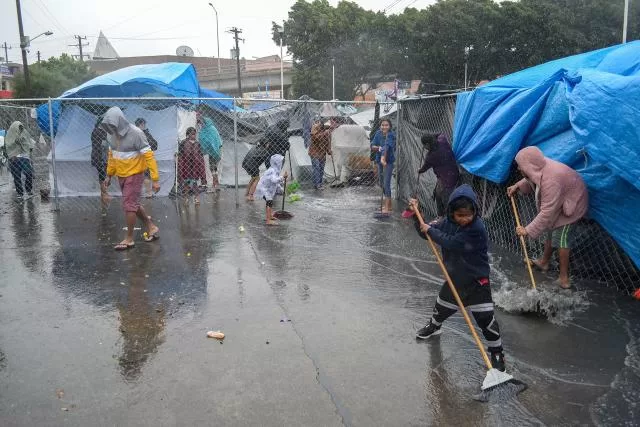MEXICO CITY- Extreme heat in Mexico, Central America and parts of the southern United States has left millions of people in sweltering temperatures, strained power grids and caused the iconic howler monkeys in Mexico They fall dead from the trees.
Meteorologists said the conditions have been caused by what some call a heat dome — an area of strong high pressure centered in the southern Gulf of Mexico and northern Central America that prevented cloud formation and caused extensive sunshine and high temperatures. temperatures. This extreme heat occurs in a world that is rapidly warming due to greenhouse gases, which come from the burning of fossil fuels such as oil, gas and coal.
High temperatures extend along the Gulf of Mexico to parts of the United States, including Texas and Florida. This heat wave comes as thousands of people in Texas remain without power after thunderstorms hit parts of the state last week.
Shawn Bhatti, a meteorologist with the National Weather Service (NWS) forecast office in Miami, said southerly winds coming from the tropics transported warm, moist air northward from the equator, which contributed to the unusually warm conditions.
“Hotter than normal”
South Florida has been warmer than normal. Miami International Airport recorded a daily high temperature of 35.6 degrees Celsius (96 degrees Fahrenheit) on May 19. That topped the temperatures of around 30 degrees Celsius (86 to 88 degrees Fahrenheit) that Miami normally sees this time of year.
A heat advisory issued by the NWS went into effect Thursday for parts of Texas. Temperatures along the Rio Grande are expected to rise to 43.9 degrees Celsius (111 degrees Fahrenheit) and 35 degrees Celsius (95 degrees Fahrenheit) in the Davis and Chinati Mountains.
Experts said the heat event raises concerns about ocean water temperatures and their influence on the upcoming Atlantic Ocean hurricane season.
The region is transitioning from an El Niño phase, which typically reduces tropical cyclone activity in the Gulf of Mexico and North Atlantic, to a La Niña phase, which increases the likelihood of cyclone occurrence. tropical climates, said Andrew Kruczkiewicz, a senior researcher at Columbia University’s School of Meteorology.
Kruczkiewicz added that extreme heat adds another ingredient to the risk of tropical cyclone activity this season, as these storms are fueled by warm ocean temperatures.
The National Oceanic and Atmospheric Administration (NOAA) said Thursday that there is an 85% chance that the Atlantic hurricane season, which begins June 1, will be above average in activity. of storms.
Mexico’s brutal heat wave has been linked to the deaths of more than two dozen people since March. But the worst part is expected to come late this week and early next week.
Mónica Eréndira Jiménez, from the National Meteorological Service of Mexico, said that the current heat wave will be one of the longest and most worrying of 2024 because it affects the majority of the country. In May, more than 46 locations recorded record temperatures.
The situation is especially dire in places like Mexico City, which recorded a record high temperature of 34.3 degrees Celsius (nearly 94 degrees Fahrenheit) on May 9 and is expected to reach 35 Celsius (95 degrees Fahrenheit) in the next days. In the capital, heat combines with pollution, so ozone concentrations are expected to increase, warned the climate change program of the National Autonomous University of Mexico.
Impact on wildlife
The impacts on wildlife have shocked scientists, who reported the deaths of more than 130 howler monkeys in the southeastern jungles and increased bird mortality in the northern part of the country, likely caused by heat and other factors.
With below-average rainfall across most of the country this year, lakes and dams are drying up and water supplies are running out.
The protests have multiplied. A group of police officers blocked six lanes of traffic on a major avenue in Mexico City on Wednesday; They said their barracks lacked water for a week and the bathrooms were unusable.
Authorities have had to transport water in tanker trucks for hospitals and firefighting equipment.
Low levels at hydroelectric dams have contributed to blackouts in some parts of the country, and this week OXXO, the nation’s largest convenience store chain, said it is now limiting ice purchases to two or three bags per customer. in some places.
Mexico’s National Weather Service is predicting another heat wave for June, but it is expected to be shorter and not as severe as the current one.
Nearby countries, such as Guatemala, Belize, El Salvador, Honduras, Dominican Republic, and Haiti, are also experiencing abnormally warm temperatures due to this high pressure area.
Source: AP




